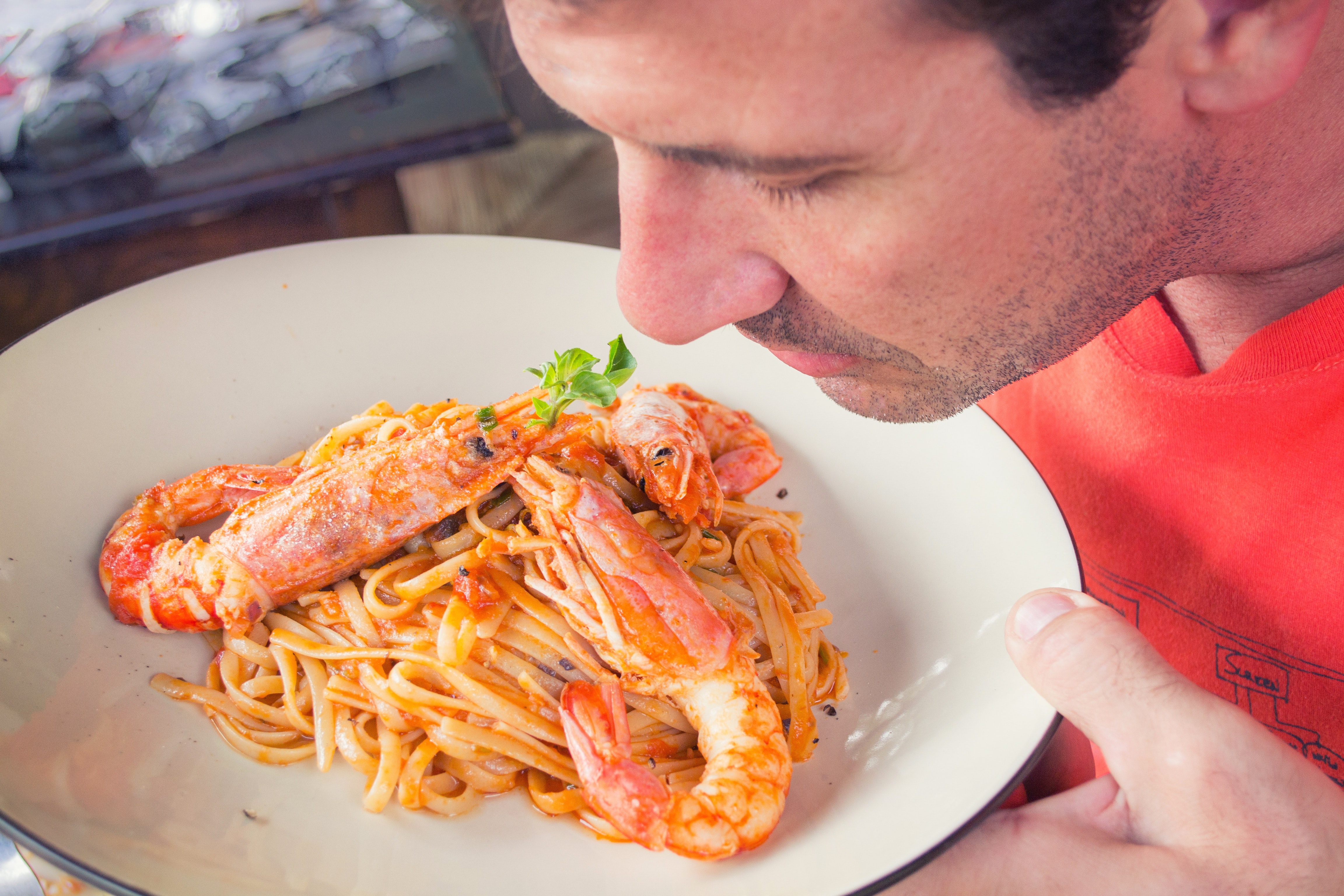If you or someone you love has been diagnosed with FPIES (Food Protein Induced Enterocolitis Syndrome) then you’ve probably already noticed that it’s largely considered a condition that affects kids. As an adult with FPIES, it’s hard to get valuable information and it’s a little scary and frustrating because you don’t know what’s going on. To be honest the research isn’t quite there yet either, so there are still quite a few question marks. Because there aren’t many peer reviewed studies looking at adults with FPIES, I talked to several people who have been diagnosed as an adult through a Facebook group specifically for FPIES. This is what I found.
Adult FPIES is different from FPIES in babies and toddlers
| Infant/Toddler FPIES | Adult FPIES | |
| Age of Onset | 0-12 months | Any age, usually hits out of nowhere |
| Symptoms | Vomiting, Diarrhea, lethargy occurring 2-6 hrs after eating | Stomach-bug or food poisoning like GI issues including vomiting and diarrhea. |
| Treatment | -Give medicines to stop vomiting (Zofran) and fluids to rehydrate. -Avoid trigger foods for 18 months with no accidental exposures. -Trigger foods are challenged using a Dr’s office or hospital oral food challenge | -Give Zofran to stop vomiting, seek emergency care for fluids if needed. -Avoid trigger foods permanently. |
| Diagnosis & Testing | A doctor will diagnose FPIES based on symptoms after ruling out other conditions with similar symptoms. Oral food challenges are often used to help determine if a trigger food has been outgrown. | Oral food challenges can be used to diagnose adult FPIES, or diagnosis can be made based on reported symptoms. |
| Age when outgrown | Anywhere from 3-6 years old, depending on the severity of triggers. Some kids outgrow sooner, some later. | There haven’t been documented cases of adults outgrowing FPIES |
| Most common triggers | Milk, Soy, Oats, Rice, Sweet Potato, Peas, Chicken, Beef, Banana, Avocado, and Eggs. | Shellfish, Fish, Eggs, Peanuts, Almonds, Chicken, Dairy |
Age of Onset
Out of the 30 people I talked to, the youngest person was 15, and the oldest was 64, so there’s quite a range of ages that can be affected. Most of the people found their first trigger food when they were in their 30’s, and most of the people that I talked to had been happily eating that food for most of their lives. They had no idea what caused the food to start making them sick, and most of them actually had to eat that food several more times (sometimes over the course of several years) before they connected the dots and realized it was from a specific food.
The most common statement that I heard was that it hit out of nowhere, and that they were diagnosed with a stomach bug or food poisoning several times before they connected the dots that it was FPIES.
This makes adult FPIES slightly more unnerving than it is for children – because there seems to be no rhyme or reason to what causes the reactions, and it can happen at any time, even with food that you have been happily eating up until that point. I’ve suspected adult FPIES myself recently to freshwater fish and crab, based on the reactions I’ve had the last 4 times I’ve eaten them. If it hadn’t been for my kids already being diagnosed with FPIES, I would have thought it was a coincidence or maybe that I got some bad fish. However, the tell-tale sign in our house of an FPIES reaction is the timing of the reaction – and each time I got sick from one of those foods, it happened 4 hours after eating it, just like it did for my kids with their FPIES triggers.
Symptoms
Symptoms of FPIES for adults are usually the classic vomiting and diarrhea that occur 2-4 hours after a reaction. Adults with severe reactions can have vomiting to shock just like kids. They can also have shaking, low body temperature, or fever. Lessor reactions can cause extreme nausea and diarrhea.
Treatment
Unfortunately, for FPIES, there isn’t a cure. There isn’t even a medicine that you can take that will help you avoid a food reaction. The best treatment is to avoid the food permanently that’s making you sick. FPIES reactions can start from even just one bite of the offending food.
It’s important to get information from your doctor about what to do if you do start to have a reaction. As part of the treatment plan for our kids, we keep an ER letter (here’s a sample from the I-FPIES website) that their doctor has tailored to fit their weight and specific requirements and he has signed. We show that at the Emergency Room if we have to go, because it saves some time and helps the attending doctors and nurses understand exactly what is going on and what the treatment options should be. The doctors at the Emergency Room can take the information that’s in the letter and see if it fits what they see when we show up, and then they can tailor the treatment from there based on what it looks like might be needed.
We also keep a prescription of Ondansetron (Zofran) on hand to help stop vomiting and to minimize loss of fluids. This recommendation came from our GI doctor and is based on studies that show Ondansetron can minimize FPIES reactions in children.
Treatment options at the ER can include IV fluids and IV steroids. Usually once the reaction has run its course, symptoms should resolve. However, if there is underlying gut inflammation, it can take a few days or weeks for that to resolve.
Diagnosis and Testing
Currently, there is not a test for FPIES. Most diagnoses are made based on reported symptoms from the patient. Some doctors will perform an Oral Food Challenge as a diagnosing tool, but this is not usually done because it’s risky for the patient, and let’s be honest, what adult wants to put themselves through that level of misery on purpose?
In children, food challenges are used more often to figure out if they have outgrown their trigger foods. In these cases, the food challenge occurs in a doctor’s office or a hospital.
Outgrowing FPIES Triggers
Unfortunately, there are no reported cases yet of an adult outgrowing FPIES triggers. In children, there is a chance that they can “outgrow” their triggers as their gut matures and their immune system forgets that the food in question caused a reaction last time. For adults, there are still a lot of questions about what’s possible and what is likely, because the research isn’t there yet.
Most Common Triggers
The most commonly reported triggers among the group of adults that I talked to lined up closely with the triggers that have been reported in research. The most common trigger is shellfish, followed by fish, egg, peanuts, almonds, chicken, and dairy. This is different from the common triggers in kids, which are dairy, soy, oats, rice, and banana (among others).
The bad thing about FPIES is that realistically, any food can be a trigger. There are some foods that cause bad reactions more often than others, but realistically any food could potentially cause a reaction. Hopefully once there is more information available about what causes FPIES, it will be a little easier to see what is causing reactions and how to prevent them before they happen.
If you have FPIES, especially as an adult, it can be a lonely, confusing, and frustrating thing. Know that the beginning of this journey is the most difficult. Once you are able to figure out your trigger foods, the pattern your body shows with reactions, and you learn to read food labels and ask lots of questions to keep yourself safe, it becomes much much easier.
There may still be times when you are tempted to try a trigger food that you know will make you sick, but overall you will be the best judge of your own body so that you can figure out if it’s worth it or not. There will be times you will forget and eat a bite of something you shouldn’t have, and there will be times when you ask all of the right questions and are very careful and you still end up sick. That’s part of food allergy life, unfortunately. Knowing what to avoid, and what to do if you do have a reaction, can make a huge difference. Hang in there, and know that it does get easier.
Sources
Fernandes BN, Boyle RJ, Gore C, Simpson A, Custovic A. Food protein-induced enterocolitis syndrome can occur in adults. J Allergy Clin Immunol; 130:1199-200. Found here
Holbrook T, Keet CA, Frischmeyer-Guerrerio PA, Wood RA. Use of ondansetron for food protein-induced enterocolitis syndrome. J Allergy Clin Immunol. 2013;132(5):1219–20. Found here
Miceli Sopo S, Battista A, Greco M, Monaco S. Ondansetron for food protein-induced enterocolitis syndrome. Int Arch Allergy Immunol. 2014;164(2):137–9. Found here

